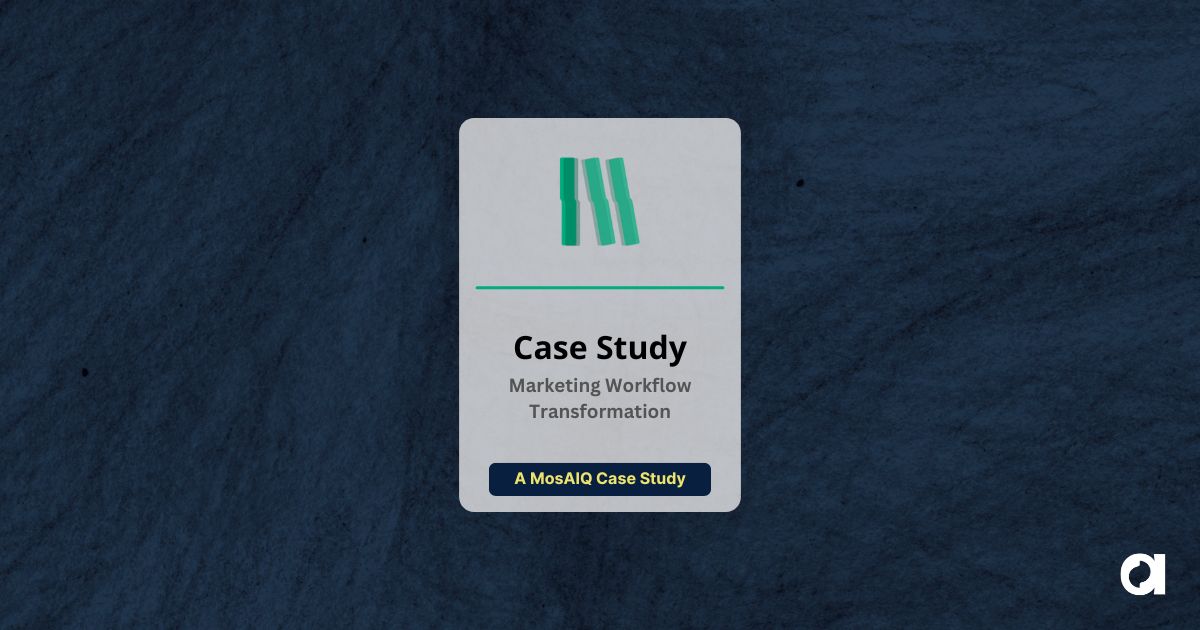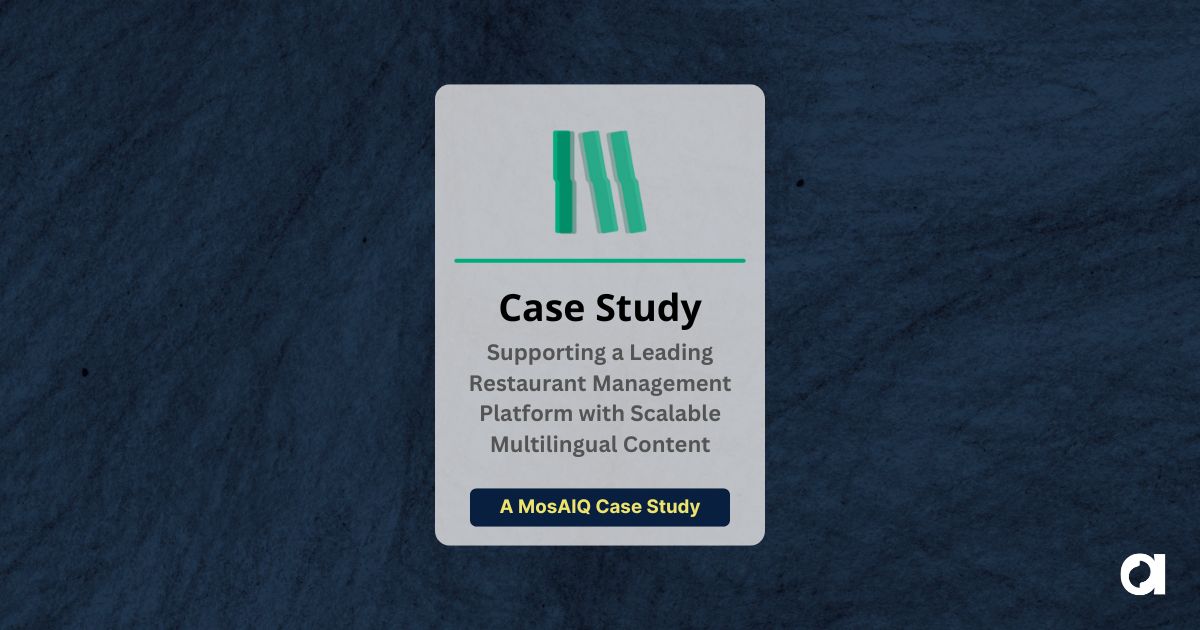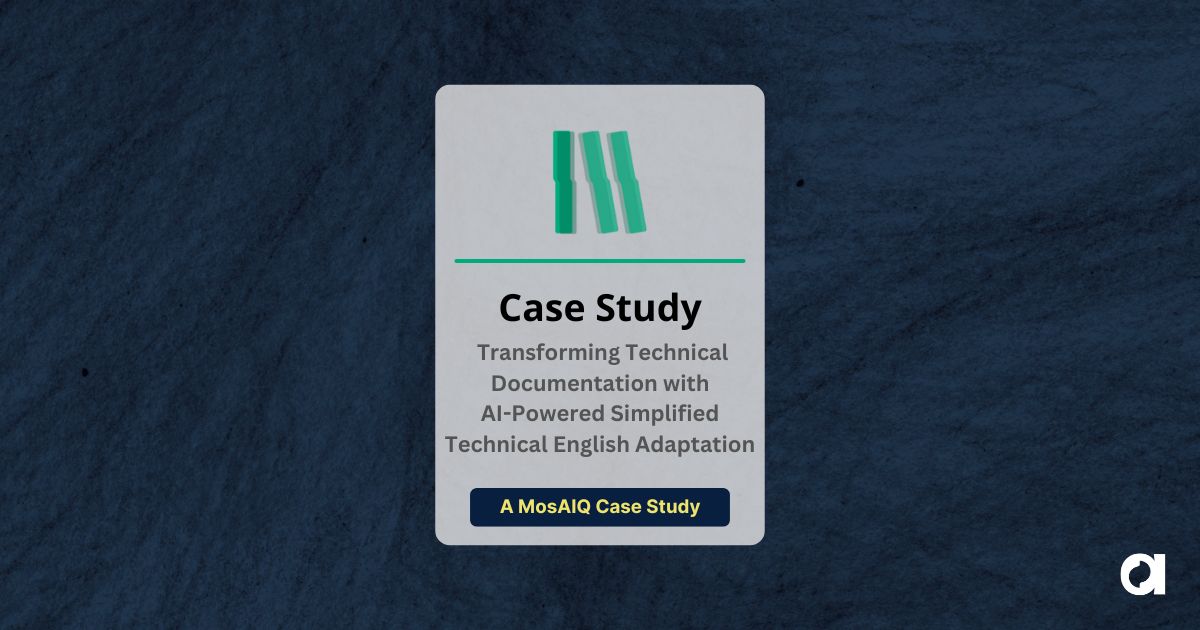AI remains a hot topic in localization right now. It shows up in conference panels and RFPs and there’s a lot of curiosity, urgency, and noise. But what’s still rare are examples of where AI is working well in practice.
This creates some risks. It’s easy to talk about potential and efficiency gains in theory, but much harder to find real-world examples of AI systems already delivering measurable value. The conversation often jumps ahead to capabilities without first asking whether the infrastructure is in place to support them.
At Argos, we begin by talking with you about your goals and then choose the right tool to fit your needs. If AI helps make content clearer, faster, or more consistent, it’s worth using. But it only works if the structure around it is strong. That means the right prompts, review layers, and workflows that can handle pressure when volume or complexity increases.
To get a better picture about what’s possible, let’s look at some examples where AI has been used to support real localization goals. Each approach is grounded in practical needs and shaped to support how localization teams work on a daily basis.
Making Technical Documentation STE Compliant
A global manufacturing client supplying cutting-edge equipment for construction and industrial machinery asked Argos for help optimizing their technical documentation for global accessibility. With a reputation built on precision engineering, the client needed their documentation to match their commitment to excellence.
This project required adapting over 100,000 words of English-language content, originally translated from Japanese, into Simplified Technical English (STE) to conform with ASD-STE100. This controlled language standard improves clarity and reduces ambiguity, especially for non-native English speakers.

With more than 700 DITA XML files to review, the scope was sizable and the technical demands were high. Argos took a four-step approach:
- State-of-the-art large language models (LLMs) systematically applied the ASD-STE100 controlled-language rules across the dataset.
- Semantic matching selected the right terms based on meaning, not surface similarity. Traditional terminology tools often miss these nuances, leading to inconsistencies that can create compliance risks or costly rework.
- Argos configured computer-assisted translation (CAT) tools to preserve all formatting, tags, and structural elements throughout the process.
- Most importantly, human linguists performed the final review. These specialists verified technical accuracy, ensured compliance with ASD-STE100 regulations, and resolved cases the LLMs flagged as ambiguous.
The combination of AI efficiency, human linguistic expertise, and attention to technical details made the project a success. The final documents maintained 100% DITA structural integrity, achieved full compliance with ASD-STE100, and improved terminology clarity and accuracy, contributing to a better user experience.
Read more about this client in our case study.
Rewriting the Rules: Inclusive AI for Multilingual HR Content
For organizations focused on equity, subtle language patterns matter. A leader in psychometric assessments and HR analytics came to Argos wanting to translate large volumes of content into dozens of languages. Their priority was to maintain strict gender neutrality across every version.
Standard machine translation (MT) systems weren’t up to the task. The output often defaulted to gendered language, especially in languages with grammatical gender. Argos built a five-step process using its MosAIQ solution:
- MosAIQ analyzed the content and identified the best gender-neutral approach for each language. Prior to proceeding, experienced language experts approved the strategy.
- MosAIQ ingested and intelligently utilized the client’s existing assets, such as style guides, translation memories, and glossaries. These materials guided the AI models during translation, ensuring consistency with the client’s terminology and previous work.
- Argos used advanced prompt engineering to instruct the AI on how to translate, commanding it to follow specific gender-neutral rules for each language and counteract its default biases.
- A multi-agent AI workflow performed the next steps. The first AI agent carried out the initial adaptation based on the prompts and resources. A second, separate AI agent automatically reviewed this output as an AI-driven quality check.
- After the content passed the AI checks, a human linguist started their review. By this stage, the content was highly accurate and consistently adapted, allowing them to focus on the highest value tasks: ensuring perfect fluency, cultural nuance, and final polish.
This AI-modified approach resulted in a 60% faster turnaround time and approximately 80% cost reduction. Productivity increased by 750% and the feedback loop elevated quality and consistency, making the translations more natural, fluent and compliant with the guidelines.
From Friction to Flow: How Argos Cut Annotation Time in Half
A global technology provider was under pressure to deliver high-quality training data for LLMs fast. To do this, they needed to annotate more than 4,000 images with natural-language prompts and responses, all while adhering to strict guidelines and preserving sensitive metadata.
The company didn’t have a tool that allowed data annotation to be done easily. Teams had to juggle multiple folders, JSON files, and reference docs just to complete a single task. Mistakes were common, metadata sometimes disappeared, and the manual process simply couldn’t keep up with project deadlines.

Working closely with the client, Argos developed the Image Conversation Annotator, a custom tool that combines image viewing, prompt generation, validation rules, and instruction reference in one unified interface. The platform coordinated the annotation work by:
- Parsing entire datasets in seconds while preserving image quality and metadata.
- Utilizing built-in expression checks to catch content violations early.
- Centralizing instructions in the platform to help annotators stay aligned with project expectations.
- Enabling teams to follow multi-language workflows and annotate in five languages within a single environment.
- Dividing tasks and assigning them quickly, while giving project managers real-time visibility so they could step in if needed.
With an integrated system handling every step, the client saw a 50% increase in productivity, a 98% drop in quality issues, and a 90% reduction in their annotation backlog. Most importantly, the Image Conversation Annotator allowed the client’s team to work faster without sacrificing accuracy, metadata integrity, or oversight.
What These Projects Show
Each project began with a specific goal, which helped shape the process. In some cases, the focus was on improving accessibility. In others, it was about supporting inclusive communication or ensuring regional accuracy.
AI played a defined role in each by supporting controlled language rules, helping reduce gendered phrasing, or accelerating multilingual training data creation. But in every case, it operated within clear limits, with humans actively guiding decision-making.
These examples show what makes AI usable in practice: scoped roles, defined goals, and workflows that give people the tools and control they need to do their work well.
Get Started with AI That Works for You
To explore AI solutions for your localization and global content needs, contact us or visit us at argosmultilingual.com.
 Argos Multilingual
13 min. read
Argos Multilingual
13 min. read
Join Stephanie Harris-Yee and Erik Vogt for a thought-provoking discussion on how artificial intelligence is transforming marketing beyond just accelerating content production. This conversation explores the shifting paradigm from content volume to precision targeting and the evolving role of localization in an AI-driven marketing landscape. Key topics covered: The changing bottleneck from production to audience […]

 Argos Multilingual
14 min. read
Argos Multilingual
14 min. read
AI-Powered Quality Assurance in Localization Join Stephanie Harris-Yee and Erik Vogt for an in-depth exploration of AI LQA (Linguistic Quality Assurance) and its transformative impact on the localization industry. This conversation delves into how artificial intelligence is enhancing quality control processes and reshaping traditional approaches to translation quality assessment. Key topics covered: The current state […]











